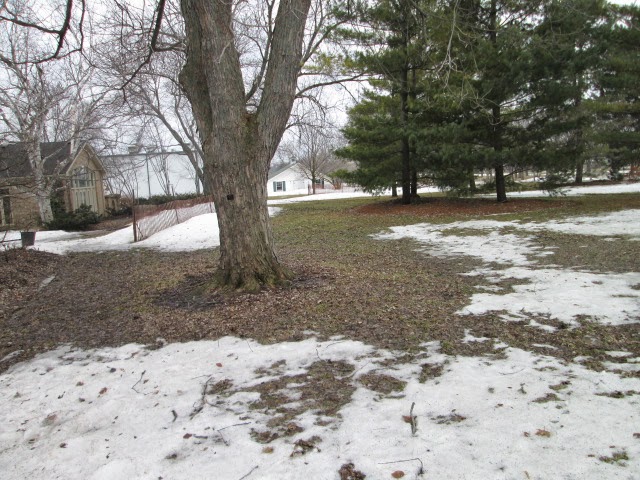Friday April 18th 2014
It was a lovely morning, Adam and I started
off with filling in the ruts around the property. This required us to kick back
the turf and soil to where it originally was. We also had to add some more soil
to some spots where they were really low. After adding the soil we raked it out
all nice and smooth. I was shocked as to how many people and plows actually
drive on the grass and just don’t care. Our second job of the day was to make a
more defined edge to the already existing tree wells. We did one maple, three
pines and three crab-apples. After they were all complete it was time to add
the mulch. Adam was a pro so he went to get that for us using the tractor. Once
our tree wells were finished our first day was almost done, we had one last
thing to do, pull out the Serbian spruce up in the front bed. That was a lot
easier than I thought we could pull them right out just using our hands. I
filled out the form saying that we took them out and put it back with the other
ones. That was the end of our first day.
Saturday
Saturday was a little slow with us. All
Adam did until last break was edge the front bed. And all I did until last
break was prune the burning bush (until Pascoe told me not to worry about it
because they were coming out anyways… couldn’t have told me that before I
started) and pruned the Nine bark. After lunch we decided to get a head start
on the cedar hedge because we knew we still had a lot to do. We knocked off all
the soil from the root balls and left them to bake in the sun. We also had to do
some of those buggers up that people had forgotten to do. Other than having to
remove the debris from the garden bed that about all we did Saturday. I wasn’t
too impressed with our work ethic and the amount of work completed for
Saturday.
Sunday
(Easter, and also the VERY last day of practical!!!!!)
Since we really didn’t get much done on Saturday
we both knew that this is crunch time! Adam went back up to the front of the
garden to finish is edge I’m guessing, he also had to mulch it so I’m hoping he
did that too. While he was doing that, my best friend Courtney and I started on
the cedar hedge. She was in a group of three and they powered through almost
all their stuff so she offered to help me out. What a nice friend. First job we
had to do was remove the root balls. As I drove along with the RTV she would
just pick them up and chuck them into the trailer. We had a pretty good system
going once we got into it. Once they were all cleaned up, she was on one side
and I was on the other she would rake her side of the soil back into the hole
then I would rake mine, once again we had an amazing system going. Now it was
time to mulch. I drove the RTV over and watch Courtney somehow perfectly
operate the tractor and dumped a big load of mulch in. Sticking to our system,
id pull up, park, get out, and help her unload the mulch around the cedars,
back in drive a little more. We dropped all the mulch that we needed for our
section by lunch time. After lunch I was flying solo again, at this point Adam
was down at the other end removing his root balls. I started to spread the
mulch along the hedge. Adam came up to help me once he removed his root balls.
This is where crunch time began. Not only did we still have to much the whole
other side of the hedge but we still had to fill the holes in with the soil.
And I still had to prune those dang dogwoods. I left Kattis to trust him to
finish the part where I started. I brought the RTV down with me to the other
side and started dumping mulch. Filling in the holes and dumping mulch.












































